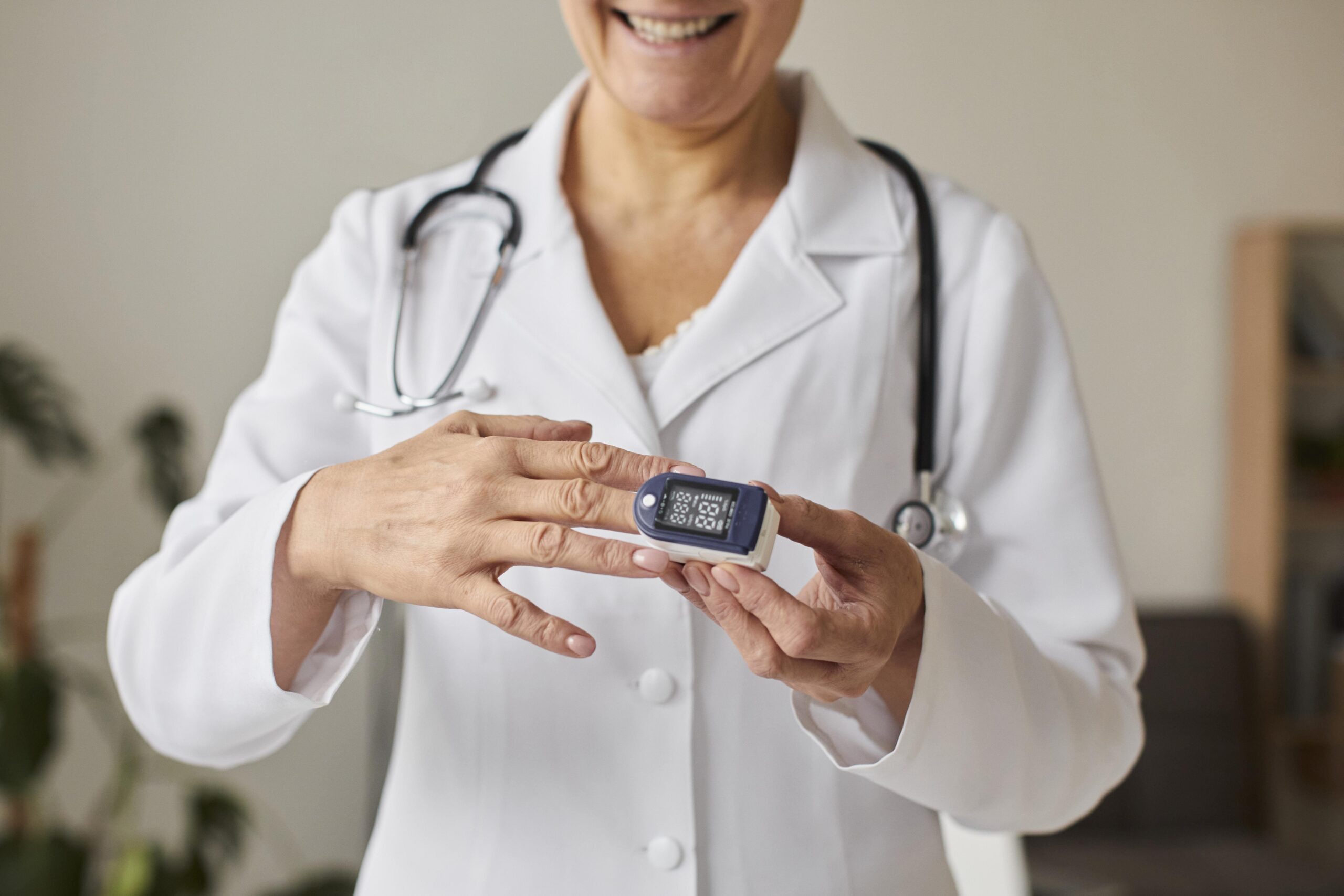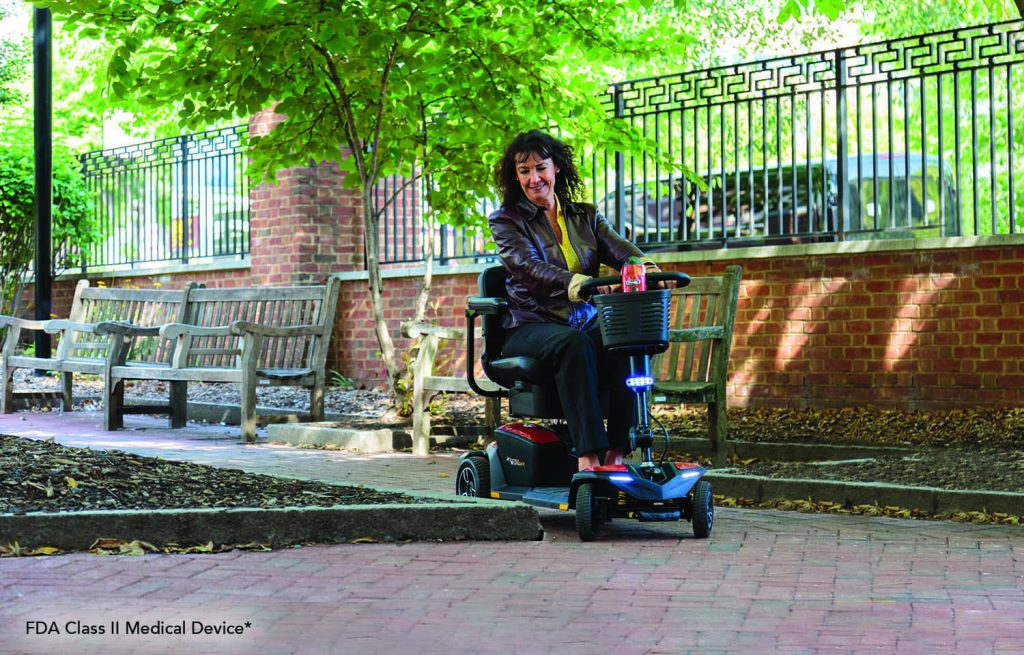Managing diabetes has seen a major transformation over the past two decades, and one of the most significant advances has been the introduction of Continuous Glucose Monitors (CGMs). As a certified diabetes educator, I’ve seen how CGMs have shifted diabetes management from a reactive approach to one that empowers patients with real-time insights into their glucose levels. In this article, I’ll explain how CGMs work, their benefits and challenges, and why they’re such a game-changer for those managing diabetes.
What is a Continuous Glucose Monitor (CGM)?
A Continuous Glucose Monitor, or CGM, is a device that automatically tracks glucose levels throughout the day and night. Instead of relying solely on intermittent finger-stick tests, CGMs provide a continuous stream of data, allowing patients and healthcare providers to observe patterns and trends in real-time.
Components of a CGM System:
- Sensor: A small device inserted just beneath the skin, usually on the abdomen or arm, that measures glucose in interstitial fluid (the fluid between cells).
- Transmitter: Connected to the sensor, this sends glucose data wirelessly to a receiver or smartphone.
- Receiver or App: Displays real-time glucose levels and trends and often provides alerts for highs and lows.
The FDA has approved CGMs for use by both Type 1 and Type 2 diabetes patients, and these devices are increasingly recognized for their ability to improve diabetes control and overall quality of life.
1. Key Benefits of Continuous Glucose Monitoring
CGMs have proven life-changing for many people managing diabetes. Here’s a look at some of the key advantages that set CGMs apart from traditional blood glucose monitoring methods.
a. Real-Time Glucose Tracking
Unlike traditional blood glucose meters, which only offer a “snapshot” of glucose at a particular moment, CGMs provide continuous data throughout the day and night. This means:
- 24/7 Monitoring: Users can see glucose levels in real time, with readings every few minutes.
- Trend Arrows: Many CGMs display arrows indicating whether glucose is stable, rising, or falling, which can be invaluable for managing levels proactively.
b. Fewer Finger Sticks
One of the biggest frustrations for diabetes patients is the frequent finger-pricking required to measure blood glucose. CGMs reduce the need for finger sticks considerably, which can ease discomfort, especially for patients who check their blood sugar multiple times a day.
c. Improved Control and Reduced Complications
Studies show that people who use CGMs tend to have better glycemic control. Real-time monitoring helps patients respond to rising or falling glucose levels quickly, which can lead to:
- Lower HbA1c: With better monitoring, patients can often achieve lower average blood glucose levels over time.
- Fewer Hypoglycemic Episodes: CGMs alert users to low glucose, helping them avoid the dangerous consequences of hypoglycemia.
d. Insights into Daily Activities and Glucose Levels
Because CGMs track glucose in response to food, exercise, stress, and other factors, they allow users to see how daily choices affect their glucose in real time. This insight helps patients make informed decisions and adjust their activities to maintain optimal glucose
2. How CGMs Are Changing Diabetes Management
The use of CGMs has led to a major shift in how both patients and healthcare providers approach diabetes management.
a. From Reactive to Proactive Management
Traditional glucose monitoring often requires waiting for symptoms before testing. With CGMs, patients no longer have to “react” to symptoms; instead, they can proactively manage their glucose levels by making real-time adjustments based on trends they observe.
b. Better Data for Personalized Care
CGMs collect an abundance of data, providing detailed glucose trends and patterns over days, weeks, and months. This information allows healthcare providers to make more accurate, personalized recommendations for insulin dosing, meal planning, and lifestyle changes.
c. Enhanced Quality of Life
For many people, CGMs reduce the daily anxiety of managing diabetes. The constant availability of data, along with alerts for high and low glucose levels, allows patients to focus more on life’s activities and less on blood sugar worries.
3. Potential Challenges with CGMs
While CGMs offer a wealth of benefits, they also come with some challenges. Here are a few to keep in mind:
a. Cost and Insurance Coverage
CGMs can be expensive, especially for those without insurance. While Medicare and many private insurance plans cover CGMs, high out-of-pocket costs may still be a barrier for some patients.
b. Calibration Requirements
Some CGMs require occasional calibration with a traditional blood glucose meter to ensure accuracy. This can add a step to the process and may feel burdensome for some users.
c. Sensor Sensitivity and Accuracy
CGMs measure glucose in interstitial fluid, which means they may lag slightly behind blood glucose readings, especially during rapid changes. Although most CGMs are highly accurate, factors such as dehydration or compression of the sensor can occasionally impact readings.
d. Maintenance and Replacement
CGM sensors must be replaced every 7 to 14 days, depending on the model. This requires regular attention and replacement supplies, which some users find inconvenient.
4. Choosing the Right CGM for Your Needs
With several CGM options on the market, choosing the right one depends on individual needs, budget, and lifestyle.
a. Popular CGM Options
- Dexcom G6: Known for its accuracy and compatibility with multiple devices, including some insulin pumps, it doesn’t require calibration and has customizable alerts.
- Freestyle Libre: Often more affordable, the Freestyle Libre is discreet and provides data with a quick scan rather than continuous updates.
- Medtronic Guardian Connect: Compatible with Medtronic pumps and can alert users to glucose trends up to an hour in advance.
b. Key Features to Consider
- Alarm Options: Look for customizable alerts for both high and low glucose levels, especially if hypoglycemia is a frequent concern.
- Data Compatibility: Many CGMs sync with smartphone apps, smartwatches, or insulin pumps, allowing users to view glucose data alongside other health metrics.
- Ease of Use: For patients who prefer less maintenance, models that don’t require frequent calibration can make CGMs more convenient.
5. Future of CGMs and Diabetes Management
CGMs have already revolutionized diabetes care, and new advances promise even more convenience and accuracy. Here’s a look at what the future holds:
a. Extended Sensor Wear
Future CGMs may offer sensors that last 30 days or more, reducing the need for frequent replacements.
b. Non-Invasive Monitoring
Researchers are working on non-invasive CGM technology that would eliminate the need for skin insertion. This could make CGMs accessible for more people and improve comfort.
c. Integrated Artificial Intelligence
Some CGMs are beginning to incorporate artificial intelligence to predict glucose trends and suggest proactive adjustments, providing users with even greater control over their health.
FAQs
1. Do I still need to do finger sticks with a CGM?
Most CGMs reduce or eliminate the need for finger sticks. However, some models may require occasional calibration with a traditional blood glucose meter.
2. Can I use a CGM without a smartphone?
Yes, most CGMs come with a dedicated receiver for patients who prefer not to use a smartphone. Some CGMs also sync with smartwatches and other devices for added convenience.
3. Does Medicare cover CGMs?
Yes, Medicare covers certain CGMs for eligible patients. Check with your provider and Medicare plan for specific requirements and coverage details.
4. Are CGMs suitable for Type 2 diabetes patients?
Yes, CGMs are increasingly used by patients with both Type 1 and Type 2 diabetes, especially those who need better control or have fluctuating blood sugar levels.
5. How often do CGM sensors need to be replaced?
This depends on the CGM model. Most sensors need replacement every 7 to 14 days, though upcoming models may have extended wear times.
Conclusion: Empowering Diabetes Management with CGMs
Continuous Glucose Monitors have reshaped diabetes management by offering real-time, actionable insights that empower patients to take control of their health. From reducing the need for finger sticks to helping patients and providers make data-informed adjustments, CGMs have transformed diabetes care into a proactive and precise process. With the continuous advancement of CGM technology, managing diabetes will only become easier, providing better outcomes and enhancing quality of life for millions of people worldwide.






